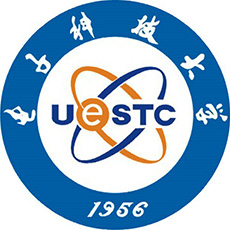【高中英语单词】英语语法:动词的时态和语态

动词的时态
在英语中,不同时间和方发生的动作或状态要用谓语动词的不同形式来表示,这种表示动作或者状态发生时间和方式的动词形式称作动词时态。
01一般现在时
可以用来表示客观规律和真理,还可以表示目前状态、能力、性格 和个性,还能表示经常或习惯性的动作,常与often, always, from time to time等时间状语搭配使用。
用法:
① 在由when,until,once,as soon as,so long as等引导的时间状语从句或条件状语从句中,常用一般现在时态代替一般将来时态,主句用一般将来时态或用祈使句或含有can, may, must等情态动词,俗称“主将从现”。
I'll call you as soon as I get off the plane.
我一下飞机就给你打电话。
②在“the+比较级..., the+比较级...(越……越……)”句型中,若主 句是一般将来时,则从句通常用一般现在时。
The harder you study, the better results you will get.
你学习越努力,成绩就越好。
③ 表示客观真理,即使出现在过去的语境中,仍用一般现在时。
I learned that the earth goes around the sun when I was in primary school.
当我上小学的时候,我知道了地球绕着太阳转。
④ 在make sure(弄清楚),make certain(弄清楚),take care(注 意,当心),be careful(注意,当心),mind(注意),watch(注 意)等后的that从句中通常也用一般现在时表将来。
Take care that it does not occur again.
注意别再发生这样的事。
Make sure you come back soon.
你要保证快点回来。
⑤come, go等动词用一般现在时表示按规定、计划或时间表将要发 生的事。
According to the timetable, the train starts at 10 o'clock in the morning.
按照时刻表,火车将在早上10点出发。
这类用法限于表示“移动”的动词:come(来),go(去), leave(离开),start(出发),begin(开始),arrive(到达), depart(离开),stay(逗留)等。
⑥有些表示状态和感觉的动词表示现在发生的具体行为时,只用一般现在时,而不用进行时态。
The plan sounds great.
这个计划听起来很棒。
⑦用在倒装句中,表示动作正在进行。
There goes the bell.=The bell is ringing.
铃响了。
02
一般过去时
表示在过去某个特定时间发生,也可以表示过去习惯性、经常性的动作。一般过去时不强调动作对现在的影响,只说明过去的事情。常与 表示过去时间的yesterday, just now, a moment ago, in May, last night/year/week, once upon a time, the other day, in the past等连用。
用法:
① 在wish, would rather的宾语从句中和在as if引导的状语从句中,以及在It is time that...的从句中,谓语动词用一般过去时表示对现实状况 的虚拟或不大可能实现的愿望。
I wish that I could fly like a bird.
我希望我能像鸟儿一样飞翔。
I'd rather you went tomorrow.
我宁愿你明天去。
It's high time that you started working.
是你开始工作的时候了。
② used to do sth. 意为“过去常常做某事”,表示过去习惯性的动作或 状态,但如今已不存在。
I used to work in a small town, but now I am working in Beijing.
我过去在一个小镇上班,但是我现在在北京工作。
③ 描述过去时间内连续发生的几个动作。
He opened his eyes, put on his clothes quickly and jumped from the bed.
他睁开眼,迅速穿上衣服,然后从床上跳了下来。
④ 表示说话人始料未及的事情,用一般过去时。表示“刚刚”,暗示 现在已经不再这样。
—Oh, it’s you! I didn’t recognize you.
哦,是你啊!我都没有认出 来。
—I’ve just had my hair cut, and I’m wearing new glasses.
我刚刚剪了发,而且戴了副新眼镜。
⑤ 在含有hardly/scarcely... when..., no sooner... than...结构的句子中, 主句用过去完成时,从句用一般过去时。(注意:主句一般需要倒装)
No sooner had I heard the knock than I opened the door.
当听到敲门声,我马上就开门了。
⑥ 有些动词如expect, hope, intend, plan, want等采用一般过去时,后 接不定式的完成时可表示过去未曾实现的意图、打算或希望。
I hoped to have been invited to his wedding party.
我本希望他邀请我参加他的婚礼。
03
一般将来时
表示在将来的某个时候将要发生的动作或存在的状态,常与 tomorrow, next week, from now on(从现在开始), in the future(将来), someday(未来的某一天)等表示将来某个时间的表达连用。
用法 :
① 用“be going to+动词原形”可以表示打算和预测。
The play is going to be produced next month. 这部戏预计下个月开拍。
② 用“be to+动词原形”表示按计划或安排即将要发生的动作,有时 也表示命令、禁止或可能性。
如:We are to discuss the report next Saturday. 我们打算下周六讨论这个 报告。
③ 用“be about to+动词原形”表示即将发生的事。Look! The race is about to start.
瞧,赛车就要开始了。
④ 用“be due to+动词原形”表示按计划或时间表将要发生某事。
The strike is due to begin on Tuesday.
罢工预定于星期二开始。
⑤ 用一般现在时表将来。
A. come, go, arrive, leave, start, begin, return等词可以用一般现在时表 将来,表示在时间上已确定或安排好的事情。
The train leaves at 7 o’clock. 火车七点钟开。
B. 用在时间或条件状语从句中表示将来。
When Bill comes, ask him to wait for me.
比尔来了后,让他等我。
⑥ 用现在进行时(即be+现在分词)表示按计划或安排要发生的 事。
We’re having a party next week.
我们下星期将开一个晚会。
I’m leaving tomorrow. 我打算明天动身。
04
现在进行时
表示说话时正在进行的动作或者是现阶段正在进行着的动作。现阶 段正在进行着的动作,不一定指说话时正在进行着的动作。前者常与 now连用,有时和祈使句,如look, listen等连用。后者常和at present(目 前),this week(本周),these days(这几天)等时间状语连用。
用法:
① 现在进行时态句中含有always, all the time, forever, constantly 等词或短语时,可以表示说话人赞赏或厌恶等感情。
You are always changing your mind. 你总是改变主意。(责备 的语气)
② 某些动词,如come, go, leave, arrive, start 等可用现在进行 时表示将来。
It’s getting warmer and warmer. 天气将越来越暖和了。③ 以here, there 等词开头的句子,描述正在发生的动作,谓 语动词用一般现在时表示现在进行时。
Here comes the bus.=The bus is coming. 车来了。
④ 不可用于进行时的动词:
A. 表示事实状态的动词,如have(表示“拥有”时), belong, possess, cost, owe, exist, include, contain, matter, weigh, measure, continue等
B. 表示心理状态的动词,如know, realize, think, see, believe, suppose, imagine, agree, recognize, remember, want, need, forget, prefer, mean, understand, love, hate等。
C. 非延续性动词,如accept, receive, complete, finish, give, allow, decide, refuse等。
D. 系动词,如seem, remain, lie, see, hear, smell, feel, taste, get, become, turn等。
05
过去进行时
表示在过去某一时刻或某一段时间内进行或发生的动作,常与表示 过去的时间状语连用,如last night, last Saturday等,或者与when, while, as引导的过去时间状语从句连用。
We were watching TV from seven to nine last night.
昨天晚上七点到九点我们在看电视。
We were having supper when the phone rang.
我们正在吃晚饭时,电话铃响了。
06
现在完成时
表示过去某时刻发生的动作对现在造成的影响或结果,或者从过去 某一时刻开始,一直延续到现在的动作或状态。前者常与already, yet, just, ever, never... before, this morning, now, today, so far, in the last/past+时 间段, over+时间段, recently, by+现在时间等连用;后者常与for引导的一 段时间或since引导的时间点或过去时间状语从句连用。
应注意现在完成时与一般过去时的区别:现在完成时强调过去的事情对现在的影响;一般过去时常与具体的 时间状语连用,表示过去某时发生的动作或单纯叙述过去的事情,强调 动作。
试比较:I have seen this film. 这部电影我看过了。(强调对现在的影响,电影的内容已经知道 了)I saw this film yesterday. 我昨天看了这部电影。(强调看的动作发 生过了)
用法:
用于现在完成时的句型:
A. It is the first/second time... that... 结构中的从句部分,用现 在完成时。
It is the first time that I have visited the city.
这是我第一次参观 这座城市。
B. This is the... that... 结构,that从句要用现在完成时。This is the first time that I’ve heard him sing.
这是我第一次听他 唱歌。
07
过去完成时
表示在过去的某个时间或动作以前已经发生的动作或已经存在的状态,即“过去的过去”,必须有一个具体的过去时间或动作来支撑,强调 对比。常用时间状语有already, before, ever, just, never, still, yet等,也可 表示过去某个时间或动作之前所发生的动作一直持续到过去某个时间, 常接时间状语“since+时间点”或“for+时间段”。
用法:
① 过去完成时还经常用于主句为过去时的宾语从句中。
He said he had been a soldier.
他说他当过兵。
They said they had seen the film.
他们说这部电影他们看过。
②“It/This/That was+the+序数词+time+that...”句式中,that后 面的从句用过去完成时。
It was the third time that he had made the same mistake.
这是他第三次犯同样的错误。
③ 动词expect, hope, suppose, think, want等的过去完成时可用 来表示未实现的计划、打算或希望。
He had wanted to buy a house in the US.
他本想在美国买栋房子。
④在hardly/scarcely... when..., no sooner... than... 两个结构中的 主句通常要用过去完成时。Hardly had I told her the news when she began to cry.
我一告诉她这消息,她就哭了。
No sooner had he fallen asleep than he lay down on the bed.
他一躺到床上就睡着了。
⑤ 在条件状语从句以及wish或I'd rather后的宾语从句中,常用过去完成时表示与过去事实相反的假设、推断等(虚拟语气)。
I would rather you had not told her the truth. 我宁愿你没有告诉她真相。
08
过去完成时
表示从过去某个时间看来即将发生的动作或存在的状态。多在宾语 从句中作间接引语,常与at six the next morning/afternoon/night,thenext day/Friday/week/month,the following day/week/month/year,two days/three weeks/four years later等类似表达连用。
用法:
① was/were going to+动词原形;was/were to+动词原形;was/were about to+动词原形等结构,都可表达一种即将实现的意 图或打算。
They said that they were going to be sent to meet her at the railway station.
他们说他们将被派去火车站接她。
② 条件状语从句和时间状语从句中须用一般过去时代替过去将来时。
I didn’t know when she came, but when she came I would let you know.
我不知道她什么时候会来,但是她来的时候我会让你知道。
③ would do表示过去的习惯,意为“总是做,总会做,常常做”。此处would为情态动词。
The little girl lived in a simple and poor house on a hill. Usually she would come to play in the small graden.
这个小姑娘住在山上一 间简单破旧的房子里。通常她会来这个小花园里玩耍。
09
过去完成进行时
表示从过去某个时刻开始一直持续到现在的动作,并且可能还将持 续下去或者在说话时刻之前到现在正在进行的动作。基本结构:助动词 have/has+been+doing。常与“for+时间段”或“since+时间点(也可以是从 句)”这类时间状语连用。
注意:有些现在完成进行时的句子等同于现在完成时的句子,但大 多数现在完成进行时的句子不等同于现在完成时的句子。
They have been living in this city for ten years.=They have livedin this city for ten years. 他们在这个城市已经住了10年了。
I have been writing a book.
我一直在写一本书。(动作还将继续下去)
I have written a book.
我已经写了一本书。(动作已经完成)
动词的语态
动词的语态时动词的一种形式,表示主语和谓语之间语法或者语义的关系。英语的语态有两种:主动语态与被动语态。
各种时态的被动语态:
| 时态 | 被动语态构成形式 |
| 一般现在时 | am/is/are done |
| 一般过去时 | was/were done |
| 现在进行时 | am/is/are being done |
| 过去进行时 | was/were being done |
| 现在完成时 | have/has been done |
| 过去完成时 | had been done |
| 一般将来时 | will/shall be done |
| 过去将来时 | would/should be done |
01
谓语动词主动表被动情况
(1)有些动词可以用其主动形式表示被动意义,特别是当主语是 物时,如sell, write, wash, open, lock等。The book sells well. 这本书销路好。
This knife cuts easily. 这刀子很好用。
(2)表示“发生,进行”的不及物动词和短语,如:happen, last, take place, break out, come out, come about, come true, add up to, run out, give out, turn out等以主动形式表示被动意义。
His whole school education added up to no more than three years.
他在学校接受的教育全部加起来还不足三年。
(3)表示感受、感官的系动词,如feel, sound, taste, book, feel等, 在主系表结构中常以主动形式表示被动意义。
This book published last month sells well.
上个月出版的那本书卖得不错。
(4)在need, require, want, be worth, deserve后的动名词必须用主动形式。
The door needs repairing.=The door needs to be repaired. 门该修了。
This book is worth reading. 这本书值得一读。
02
谓语动词被动表主动情况
(1)be seated坐着。
如:He is seated on a bench.(He seats himself on a bench.)坐在凳子上。
(2)be hidden躲藏。
如:He was hidden behind the door.(He hid himself behind the door.)他藏在门后。
(3)be lost迷路。
如:Unsaved changes will be lost.
未保存的更改将丢失。
(4)be drunk喝醉。
如:He must be drunk, or else he is mad.
他肯定是醉了,不然就是疯了。
(5)be dressed穿着。
如:The girl was dressed in a red short skirt.
那位女孩穿着一条红色的短裙。
注意:be determined, be pleased, be graduated(from), be finished, be prepared(for), be occupied(in), get married等都属于被动形式 表示主动意义的情况。
He is graduated from a famous university.
他毕业于一所著名的大学。
03
特殊结构形式
(1)一些表示“据说”或“相信”的动词,如believe, consider, expect, report, say, suppose, think等,可以用于句型“It+be+过去分词+that从 句”或“主语+be+过去分词+to do sth.”。
常见的具体用法有:
It is said that... 据说…… /It is reported that... 据报道…… /It is believed that... 人们相信……/It is hoped that... 人们希望……/It is well known that... 众所周知……/It is thought that... 人们认为……/It is suggested that... 据建议……
(2)make sb. heard/understood意为“使别人能听见/理解自己”。
Explain it clearly and make yourself understood.
解释清楚些,让别人能够理解你的话。
(3)在某些“形容词+不定式”作表语或宾语补足语的结构中,句子 的主语或宾语又是动词不定式的逻辑宾语时,常用不定式的主动形式表 达被动意义。这些形容词有nice,easy,fit,hard,difficult, important,impossible, pleasant, interesting等。
This problem is difficult to work out.
这是一个难以解决的问题。
各种时态的被动语态:
| 时态 | 被动语态构成形式 |
| 一般现在时 | am/is/are done |
| 一般过去时 | was/were done |
| 现在进行时 | am/is/are being done |
| 过去进行时 | was/were being done |
| 现在完成时 | have/has been done |
| 过去完成时 | had been done |
| 一般将来时 | will/shall be done |
| 过去将来时 | would/should be done |
01
谓语动词主动表被动情况
(1)有些动词可以用其主动形式表示被动意义,特别是当主语是 物时,如sell, write, wash, open, lock等。The book sells well. 这本书销路好。
This knife cuts easily. 这刀子很好用。
(2)表示“发生,进行”的不及物动词和短语,如:happen, last, take place, break out, come out, come about, come true, add up to, run out, give out, turn out等以主动形式表示被动意义。
His whole school education added up to no more than three years.
他在学校接受的教育全部加起来还不足三年。
(3)表示感受、感官的系动词,如feel, sound, taste, book, feel等, 在主系表结构中常以主动形式表示被动意义。
This book published last month sells well.
上个月出版的那本书卖得不错。
(4)在need, require, want, be worth, deserve后的动名词必须用主动形式。
The door needs repairing.=The door needs to be repaired. 门该修了。
This book is worth reading. 这本书值得一读。
02
谓语动词被动表主动情况
(1)be seated坐着。
如:He is seated on a bench.(He seats himself on a bench.)坐在凳子上。
(2)be hidden躲藏。
如:He was hidden behind the door.(He hid himself behind the door.)他藏在门后。
(3)be lost迷路。
如:Unsaved changes will be lost.
未保存的更改将丢失。
(4)be drunk喝醉。
如:He must be drunk, or else he is mad.
他肯定是醉了,不然就是疯了。
(5)be dressed穿着。
如:The girl was dressed in a red short skirt.
那位女孩穿着一条红色的短裙。
注意:be determined, be pleased, be graduated(from), be finished, be prepared(for), be occupied(in), get married等都属于被动形式 表示主动意义的情况。
He is graduated from a famous university.
他毕业于一所著名的大学。
03
特殊结构形式
(1)一些表示“据说”或“相信”的动词,如believe, consider, expect, report, say, suppose, think等,可以用于句型“It+be+过去分词+that从 句”或“主语+be+过去分词+to do sth.”。
常见的具体用法有:
It is said that... 据说…… /It is reported that... 据报道…… /It is believed that... 人们相信……/It is hoped that... 人们希望……/It is well known that... 众所周知……/It is thought that... 人们认为……/It is suggested that... 据建议……
(2)make sb. heard/understood意为“使别人能听见/理解自己”。
Explain it clearly and make yourself understood.
解释清楚些,让别人能够理解你的话。
(3)在某些“形容词+不定式”作表语或宾语补足语的结构中,句子 的主语或宾语又是动词不定式的逻辑宾语时,常用不定式的主动形式表 达被动意义。这些形容词有nice,easy,fit,hard,difficult, important,impossible, pleasant, interesting等。
This problem is difficult to work out.
这是一个难以解决的问题。
【高中英语单词】apart from的用法总结大全
【高中英语单词】antifreeze的用法总结大全
高考相关内容
高考资讯推荐
热门高校
大学院校在线查
报考信息
高考问答
有疑问就来发现


 【高中英语单词】apart from的用法总结大全
【高中英语单词】apart from的用法总结大全 【高中英语单词】antifreeze的用法总结大全
【高中英语单词】antifreeze的用法总结大全










































